Holden Commodore 2016 News
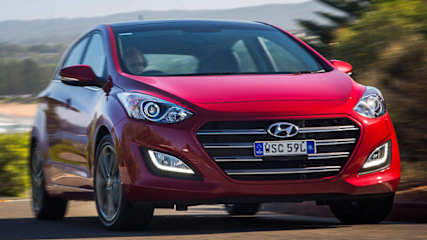
Hyundai i30 Australia's top selling car in March
Read the article
By Joshua Dowling · 05 Apr 2016
Major upset: Hyundai i30 is Australia's favourite car, beating Toyota Corolla and Mazda3.

What does the future hold for highway patrol cars?
Read the article
By Joshua Dowling · 24 Jan 2016
High-speed crooks may soon be harder to catch once Holden and Ford stop local production of police pursuit cars.Highway patrol forces across Australia have used Holden Commodores and Ford Falcons for more than three decades to nab speeding drivers and criminals trying to outrun the law.But the cars that will replace the Falcon and Commodore pursuit vehicles over the next two years will be slower and more expensive than the current models.The switch to imported cars has police across the country scrambling to find suitable replacements for highway patrol vehicles.They might look like family cars, but the latest generation pursuit vehicles used by NSW Police are the most capable ever put into service.It's not only their blistering acceleration that has helped stop pursuits before they start because, according to police, the bad guys know they can't get away.More importantly, say frontline officers, it's the stopping power that gives them the edge.Both Ford and Holden pursuit cars used by the NSW highway patrol have been fitted with police-only high-performance brakes ever since a series of brake failures led to a stringent test being introduced at the Police Driver Training centre in Goulburn more than 10 years ago.Other Australian states and territories do not have the same "pursuit test" braking requirement, leaving some officers concerned about a return to "the bad old days"."Before we had bigger brakes fitted to our cars, they would turn to mush after a few hard stops, the brake pads would eventually disintegrate," said one high-ranking officer with 20 years' experience."Ever since we had the better brakes fitted, it has enabled us to slow down through intersections more safely and more reliably ... and then accelerate again to catch up to the bad guys. It's a public safety issue as well as an officer-safety issue," he said.Other officers who spoke to News Corp Australia said there have been fewer pursuits since "the crooks realise their brakes run out before ours do."An officer with 12 years' highway patrol experience said vehicle performance was "not just about catching getaway cars"."Highway patrol are often the first cars at the scene of armed hold-ups, violent domestics, serious injury crashes and other life-threatening situations," the officer said. "The general duties cars are often tied up, whereas we're always roaming. If I've got to save someone from being stabbed, you want to get there as quickly and as safely as possible."The highway patrol certification test used exclusively by NSW Police involves the car accelerating and braking repeatedly for an extended period of time to simulate a pursuit or a response to an emergency.Both Ford and Holden had to upgrade their brakes on NSW highway patrol cars once the test was introduced.Cars that don't make the grade are not commissioned for highway patrol use. For example, the Toyota Aurion V6 did not pass NSW Police brake tests even though the car is used by highway patrol in other states.A national police advisory agency closed submissions for future vehicle replacements last week, with luxury brands dominating the list of tenders, including Audi, BMW, Mercedes-Benz and Volvo.However, these vehicles are likely to be deemed too expensive.This leaves limited options, including performance cars such as the Ford Mustang coupe, Volkswagen Golf R hatch or wagon or the Chrysler 300 SRT performance sedan, all of which are in the $50,000 to $60,000 price range.The current Ford Falcon and Holden Commodore pursuit cars cost about $48,000 -- before significant government discounts are taken into account.NSW Police said it would start to evaluate new vehicles later this year."As far as a national vehicle is concerned, that is clearly a longer term ambition (but) there is a layer of complexity around that," the statement said. "We have very specific technical requirements."NSW Police cars are more advanced than those in other states, with all 400 cars equipped with in-car video, computer terminals, and automatic number plate reading technology.Other states have just begun rolling out number plate detection cameras on a handful of cars, whereas NSW has started equipping general duties cars with the technology.Meanwhile, substitutes for future general duties vehicles are expected to be a formality, because police are already driving them.The Toyota Camry has begun replacing the Holden Commodore and Ford Falcon general duties sedans, while the Hyundai SantaFe has started replacing the Ford Territory SUV.The Hyundai iLoad and Volkswagen Transporter vans have been replacing utes as prisoner vehicles for several years.What highway patrol drive nowHolden Commodore SS V8Price: $48,6900 to 100km/h: 5.0 secondsHigh performance brakes (the same used by US police)Ford Falcon XR6 TurboPrice: $45,6900 to 100km/h: 5.0 secondsHigh performance brakes (race-bred, made by Brembo)The optionsFord Mustang V8Price: $59,9900 to 100km/h: 5.0 secondsPros and cons: High performance brakes (race-bred, made by Brembo), similar acceleration to current cars. Coupe body not as practical as a sedan but could be used for certain areas (police have used coupes before, including the Valiant Charger, Ford Falcon XB and XC Coupe and Holden Monaro). The Mustang needs a special bracket to store a full size spare tyre (a police safety requirement) because an inflator kit is standard. Fortunately the boot is bigger than before and police computer equipment is getting smaller.Chrysler 300 SRT V8Price: $59,0000 to 100km/h: 5.0 secondsPros and cons: High performance brakes (race-bred, made by Brembo), similar acceleration to current cars and it has a big boot that can fit a full size spare (a police safety requirement). The Chrysler 300 SRT V8 doesn't handle corners as sharply as the Holden Commodore and Ford Falcon performance sedans. Question mark over reliability, and it has higher service costs. Dealer network not as vast as Holden or Ford.Volkswagen Golf RPrice: $55,0000 to 100km/h: 5.0 secondsPros and cons: High performance brakes, similar acceleration to current cars and it has constant all-wheel-drive grip, which is ideal for tight city streets and wet or icy roads. The Golf R is available as a wagon to fit extra gear, but a full size spare would need to be accommodated (inflator kit or space saver is standard). The cheaper Golf GTI is not as suitable because it's slower, front-wheel-drive only and does not get performance brakes as standard.Holden Insignia VXRPrice: $51,9900 to 100km/h: 6.8 secondsPros and cons: The Holden Insignia VXR is a pointer to the all-wheel-drive turbo sedan that will replace the Commodore SS in 2018. But it needs to make a big leap over the current car which, according to independent tests, is slower than a Toyota Aurion V6. Holden insiders have confirmed the next generation Commodore performance sedan will not be as quick as the current V8, nor as cheap.Ford Mondeo TurboPrice: Not yet announced0 to 100km/h: Not yet announcedPros and cons: Ford of Europe is secretly working on a turbo all-wheel-drive version of the Mondeo mid-size sedan, but its performance credentials are an unknown. The car is also smaller and narrower than a Ford Falcon, and as with its Holden counterpart, unlikely to match today's fast Falcon, let alone beat it.
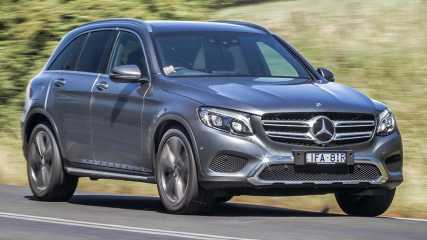
Mercedes tops 2015 COTY field for Bluetooth quality
Read the article
By Paul Gover · 04 Dec 2015
My pick for COTY king this year is the Mercedes-Benz GLC.But it's not the COTY car or contest you might be thinking, since this is all about Bluetooth.We have 11 of the best cars of 2015 assembled for this year's COTY shootout and that makes it an ideal time and place to take a closer look at Bluetooth.The phone link has become a very big deal this year, with more and more driver distractions contributing to crashes and, in NSW, prompting the extension of double-demerit penalties.Now car testing also covers the vital Bluetooth connectivityEven the car companies are split, internally and externally, as some engineers push for more and more connectivity and others say the connected car is disconnecting people from driving and safety.Car testing has always been about comfort and safety and performance and economy — with value at the very top — but now it also covers app-friendly infotainment and the vital Bluetooth connectivity.Hyundai makes some excellent cars but its Bluetooth is patchy, at best, even on the latest Tucson. If you were choosing a phone-friendly car then a Hyundai would slip well down the list.So at COTY, with help from techno king Craig Duff, I go searching for my Bluetooth champion.The Mazda CX-3 is all right but booms in the cabin, the BMW X1 and the Commodore are workmanlike, the Jaguar XE is not great.I'm expecting a lot from the Sync system in the Ford Ranger and it's good, but difficult to connect. And so it goes. Until I jump into the Benz.The phone pairs instantly, delivers excellent clarity at both ends — I've been calling the same person to check — and the call display is good and clear. For me, it wins.

2015 Car of the Year | how the finalists were chosen
Read the article
By Richard Blackburn · 04 Dec 2015
There are few bad cars on the road these days, which made it tougher than ever to pick a field for CarsGuide's 2015 Car of the Year award.The process started in December last year. A week after we awarded the Mercedes-Benz C-Class our gong, we were on the launch of the new Subaru Outback.It was the first of more than 300 new cars we pored over before arriving at 11 finalists. In between there were head-to-head battles and three-way shootouts between the most impressive of the newcomers and the existing benchmarks.Comparison tests are vital because it's easy to come away from a new car launch impressed by Brand X's latest and greatest. But it takes back-to-back testing — on the same stretch of bitumen, same potholes, same freeway — to sort the winners from the also-rans.This year's COTY judging threw up a few surprises. The first was the CX-3. It felt good to drive on the launch and when we tested it against the best in its class, it also came out on top. Up against our other finalists, it felt underdone and overpriced. The conclusion? The mini-SUV may be the new "must-have" automotive accessory but none of the new breed — there have been six all-new arrivals this year — is as practical or fun to drive as a humble hatchback.Next was the BMW X1, which fellow judge Joshua Dowling called "the most un-BMW BMW I've driven". An SUV from a German luxury brand for a tad over $60,000 sounds like a good deal, especially when a Toyota Kluger can cost similar money.While much improved over its predecessors in some areas, the X1 was underdone in others. The seats, usually a BMW highlight, were flat and unsupportive, while the front suspension crashed rudely over bumps.To a much lesser extent the same criticism could be levelled at our runner-up, the Mercedes-Benz GLC. It is still an impressive vehicle but not as well sorted as the C-Class. In their quest for new buyers, are the luxury brands losing their luxuriousness?The surprises weren't all bad, though. The fact that the Ford Ranger made our final five is testimony to the huge advances made in one-tonne utes in recent years. The Ranger didn't feel a million miles off the rest of the field on our road loop.A decade ago, jumping out of a Volvo into a Ford ute would have been like trading the Merc for a Massey Ferguson. Not now.Which brings us to the last — and most pleasant — COTY surprise: the winner, Kia's Sorento. Ever since the Koreans pinched Audi's head designer, Kia cabins have looked a cut above their competitors. Local suspension tuning has made them ride better, while their diesel engines are on par with some of the best for refinement. Add an industry leading seven-year warranty and there's plenty to like.If you're put off by the badge on the nose, it's your loss.

Kia Sorento wins 2015 Car of the Year | video
Read the article
By Paul Gover · 04 Dec 2015
Kia's family seven-seater stands out, setting a precedent in a singular field.

2015 Car of the Year preview
Read the article
By Richard Blackburn · 27 Nov 2015
This year's line-up is a dream team of pace machines, heavy-hitters and all-rounders.

How the Holden boss got dealers off-side | comment
Read the article
By Joshua Dowling · 28 Oct 2014
The industry does not know what to make of Gerry Dorizas' sudden departure but time will reveal all.Time will tell us why Gerry Dorizas left the top job at Holden suddenly.In the meantime the dealers that have carried the brand with outdated cars will need to do even more heavy lifting.Mr Dorizas had barely been in the top job at Holden for more than a month when he boldly declared that the once proud brand would return to Number One and topple Toyota by 2020.It was a big call because Holden sales had just hit a 20-year low, and it hadn’t been at the top of the charts for 11 years.Behind the scenes, Mr Dorizas began blaming dealers for the company’s woes.In one of his so-called motivational speeches to the dealer network, he told them to sell more cars. If only it were that simple.The dealers quickly got off-side, but they continued to slave away selling a model line-up that has been left largely unchanged over the past few years.Sure, Holden sales are up 1.3 per cent year-to-date in a market that is down 2 per cent. But most of that growth has been disguised by the Commodore’s bounce back from the previous year’s record low.Holden has a handful of ‘new’ cars coming next year; but they’re simply rebadged versions of selected Opel models that were withdrawn from sale last year after just 11 months. Another monumental General Motors misstep.Holden won’t have any all-new-from-the-ground-up cars until early 2016. That’s when the new Captiva is due to arrive, ahead of the imported version of the second-generation Cruze sedan.In the meantime, Holden dealers will be pushing out the same metal it has been trying to move for the past few years — against competition with newer models and a more diverse range.Holden dealers don’t deserve the blame for the company’s current predicament. They deserve a medal, because without their tireless efforts with an ageing product range Holden would be in much worse shape than it is today.
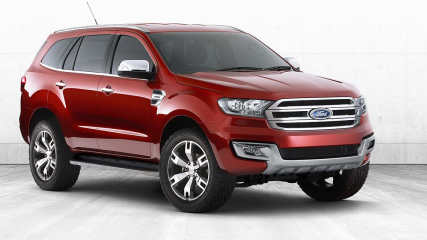
Ford, Holden and Toyota models worth waiting for
Read the article
By Joshua Dowling · 28 Aug 2014
The secret (and some not so secret) models that will power Ford, Holden and Toyota when their factories close.
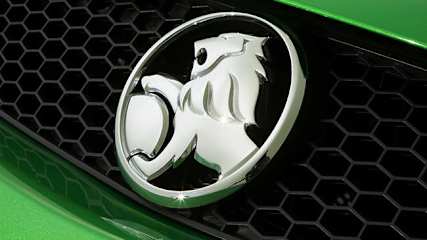
EXCLUSIVE: Holden goes ahead with factory upgrade
Read the article
By Joshua Dowling · 04 Nov 2013
Holden workers will get a 3 per cent pay rise next week and a scheduled $1000 bonus next month because the three-year wage-freeze deal they signed in September only kicks in if Holden signs a new agreement with the Federal Government to build two new cars from 2016 to 2022.The delay in that decision -- now not likely until late April or early May while the Federal Government waits for a Productivity Commission report -- means workers will remain on their full benefits.Despite the uncertainty, Holden will go ahead with a critical upgrade to its factory in Elizabeth to prepare for the next generation Commodore due in 2016 -- even though it is yet to win further funding from the Federal Government. The revelation contradicts Federal Government insiders who incorrectly claimed last week that General Motors executives in Detroit had already decided to shut the Holden factory.News Corp Australia has been told by factory workers that Holden will make the planned changes to the body shop during the scheduled summer shutdown in December and January, to pave the way for tooling for the new large sedan which, they say, is front-wheel-drive. If the new large car -- which Holden has said it will call a Commodore -- goes ahead, it will be the first time in Holden’s history that its top-selling model is not a rear-wheel-drive car.News Corp Australia has been told that Holden is spending $250,000 to make the upgrades to the body shop -- effectively where a car starts its life on the production line -- because it would be too costly to do at a later date. The factory preparations should not, however, be viewed as a guarantee that Holden’s manufacturing future is safe, industry observers have warned. The car maker is still waiting on a decision about future funding from the Federal Cabinet in late April or early May. An industry insider told News Corp Australia: “The deal may not be done (to secure Holden’s manufacturing future) but this is a prudent move. In the scheme of things, this is not a large sum of money to spend when to delay it would cost much more because it involves shutting the factory for an extended period.”Meanwhile Federal Industry Minister Ian Macfarlane has returned to Australia following his visit to Toyota executives in Japan last week. His office told News Corp Australia there is still no change to the Federal Government’s plans to wait for the final Productivity Commission review in March, and follow its recommendations. An interim Productivity Commission report due on December 20 is expected to give General Motors and Holden an indication of the Federal Government’s funding intentions.Earlier today the Federal Chamber of Automotive Industries released a report which claimed the loss of the car manufacturing industry would wipe $21.5 billion of economic activity from the Australian economy. The report also claimed that it would take the economies of Adelaide and Melbourne until at least 2025 to recover from the associated job losses. However the report was done by a firm which found contradictory results in April this year, and recommended industry subsidies be cut.The new report prepared by the Allen Consulting Group, using economic analysis from Monash University, found that the $500 million the car industry received each year generated a claimed $21.5 billion in economic activity. But a report in April this year prepared by ACIL Allen -- the company formed when ACIL Tasman merged with the Allen Consulting Group -- recommended taxpayer support be cut from struggling industries."Subsidies to particular industries are a tax on the remainder of the economy," said the ACIL Allen report prepared for the Property Council Of Australia. "They have become more significant in the last decade, totally nearly $9 billion annually. The more successful industries, those that do not need subsidies, prop up the less successful ones."COMMENTHolden’s manufacturing future remains gravely uncertain. But going ahead with crucial factory preparations for the new generation 2016 sedan shows there is still a slither of hope. Contrary to last week’s allegations from anonymous sources in the Federal Government, General Motors categorically has not “already decided” to shut down Holden’s factory operations.On the contrary Holden is spending $250,000 on a bet that a deal will be done with the Federal Government after March. That sounds like a lot of money but it’s small change in what would amount to a $1 billion investment on the two new generation cars it would build from 2016 to 2022.Sadly, though, the wait is not over for the 1700 factory workers at Elizabeth. Most likely they will go on their Christmas break during the scheduled summer shutdown not knowing about their company’s long term manufacturing future.Then they will have to endure a three-month wait for the outcome of the Productivity Commission review -- due on March 31, coincidentally after the SA election. And then they will need to wait for Cabinet to decide if it wants a car manufacturing industry in Australia, or say goodbye to it forever.joshua.dowling@news.com.auThis reporter is on Twitter: @JoshuaDowling
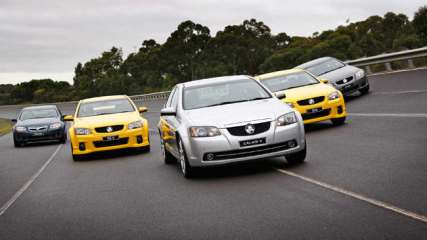
Deal ensures Holden Commodore safety
Read the article
By Paul Gover · 23 Mar 2012
There had been big question marks over the Commodore after the death of the current VE-VF series car in 2016 but all the doubts and worries disappeared yesterday with the announcement of a $1 billion commitment to local car making that comes all the way from Detroit, USA. The announcement of a $275 million government co-investment package looks good, but the $1 billion bottom line is the really important thing. Based on typical timings in the car industry, with at least an eight-year major product cycle for an all-new mechanical platform, the Commodore now looks cemented in place until at least 2024. The Cruze, which has been a sales success since it moved into Holden's Adelaide factory alongside the Commodore last year - and even out-sold its big brother in January - looks to have a similar future.But what will the future Commodore look like? No-one knows. The new-generation Holden hero is certain to be smaller than today's family favourite, with four-cylinder engines and a hybrid powertrain choice, but its body shape could easily veer away from a four-door sedan into some sort of crossover station wagon or coupe that taps Australia's growing preference for cars with flexible SUV bodies. Holden admitted more than five years ago that it needed to find a firm future for the Commodore, including the right body, and it is well down the road on the right choice. But the cash injection yesterday gives the clarity and commitment from General Motors needed to get the job done, and done right. With $1 billion to spend, it's likely that the talented designers and engineers at Fishermans Bend will be allowed to develop a totally unique 'top hat' and local mechanical package to fit over a global mechanical platform. An all-new car currently costs around $1 billion to develop from the wheels to the roof, so $500 million each should be enough to do a comprehensive localisation program on both the Commodore and Cruze. There is already talk that the next Commodore will be tied to the mid-sized Chevrolet Malibu, which will be sold in Australia next year, although sources in Detroit also point to a potential tie-up with the compact Cadillac ATS that is about to go on sale in the USA. If the Cadillac connection is right, it would mean the Commodore could continue with the rear-wheel drive that makes it so popular with Aussies. But, and it's a big but, there is still plenty of time for GM to find an all-new package to sit under an Aussie-badged and themed Commodore. It's a contrast to Toyota Australia, which is locked into a plan that calls for local production of a global Camry, with only minor tweaks for local customers.Toyota is spending $350 million on a new four-cylinder engine factory, but has been forced to cut jobs and trim its spending because of slow export sales for the Camry. Ford had it's own cash injection in January, getting $103 million to continue revamping and improving the struggling Falcon. But there is no indication yet of a solid plan - despite talk of a globalisation similar to Holden - beyond 2016. Further into the future, it is obvious that the Australian car industry will need ongoing support from Federal and State governments. There are plenty of people who want to end any form of support, but a recent survey showed that Australian taxpayers pay relatively little to ensure the future of the three carmakers.And all countries with a local manufacturing industry get some form of support, from special deals on land and taxes to outright protection and subsidies.




